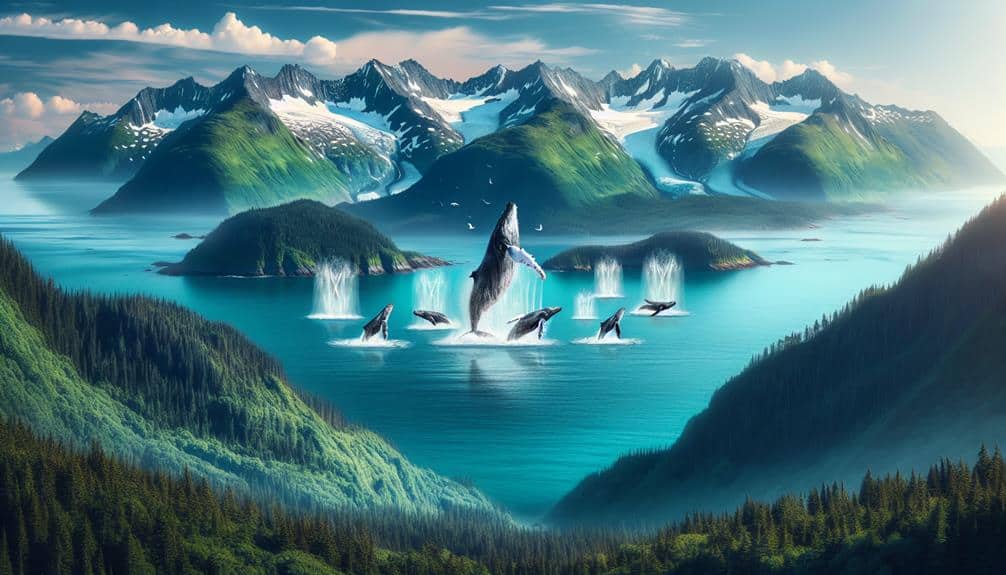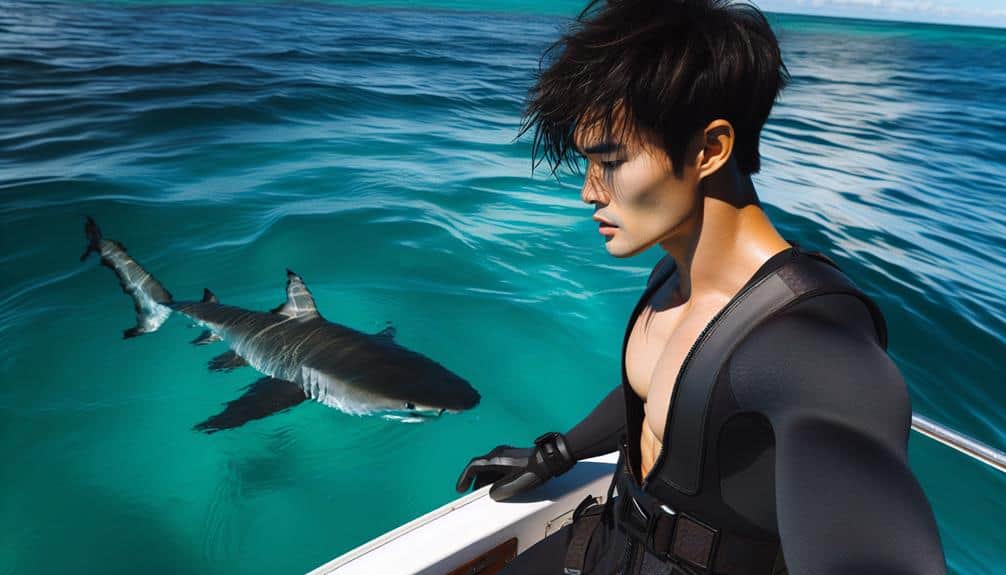For exceptional sea turtle photos, master underwater lighting techniques. Illuminate with natural light, balance shadows and highlights, enhance textures and colors. Use high-resolution cameras, fast shutter speeds, and appropriate lenses for detail and vibrancy. Understand sea turtle behaviors, from graceful swimming to curious explorations. Capture unique angles, experiment with compositions, and refine with post-processing. Respect habitats by keeping a safe distance, following regulations, and conserving their environment. Elevate your photography by bringing out the beauty of sea turtles through expert lighting. Additional tips await to perfect your sea turtle captures.
Key Points
- Use high-resolution cameras with fast shutter speeds for detailed, motion-capturing images.
- Understand sea turtle behavior to anticipate movements and capture unique interactions.
- Master lighting techniques to enhance colors, textures, and exposure balance in photos.
- Capture unique perspectives by exploring unconventional angles and viewpoints.
- Respect sea turtle habitats by maintaining a safe distance, following regulations, and prioritizing conservation.
Choosing the Right Camera
When selecting a camera for sea turtle photography, consider a model with a high resolution and a fast shutter speed to capture detailed images of these majestic creatures in motion. The lens selection is important for capturing the intricate patterns on the sea turtles' shells and the vibrant colors of the underwater world they inhabit. A macro lens can help you focus on the intricate details of a sea turtle's scales, while a wide-angle lens is ideal for capturing the grandeur of these creatures in their natural habitat.
Experimenting with different shooting angles can greatly enhance the visual impact of your sea turtle photographs. Get down to the turtle's eye level to create a more intimate connection with the subject, or shoot from below to emphasize the turtle's size and grace. Utilizing the natural light filtering through the water can add depth and dimension to your images, highlighting the textures and colors of the sea turtles' environment. By carefully considering your lens selection and shooting angles, you can capture stunning images that showcase the beauty and elegance of sea turtles in their underwater world.
Understanding Sea Turtle Behavior
To understand sea turtle behavior fully, observe their movements and interactions within their natural habitat to discern patterns and preferences. When observing their habits underwater, you may notice that sea turtles exhibit different behaviors depending on their species and environmental factors. Studying movement from above can provide insights into their feeding patterns, mating rituals, and nesting behaviors. Sea turtles are graceful swimmers, using their flippers to glide effortlessly through the water. By paying attention to how they navigate the ocean currents and interact with other marine life, you can gain a deeper understanding of their behavior.
Sea turtles often display curious behaviors such as exploring coral reefs for food or basking in the sun near the surface. Some species are known to migrate long distances, while others prefer to stay closer to their nesting grounds. By observing these intricate behaviors up close, you can capture stunning photographs that showcase the natural beauty and elegance of these magnificent creatures.
Mastering Lighting Techniques
Enhance your sea turtle photography skills by mastering advanced lighting techniques to capture their beauty in the most alluring way possible. When photographing these majestic creatures, the right lighting can make a significant difference in the final image.
Here are essential lighting tips to elevate your sea turtle photography:
- Utilize Natural Light: Make the most of the sun's natural light to illuminate the sea turtles naturally. Position yourself in a way that the sunlight enhances the textures and colors of the turtles' shells.
- Experiment with Essential Light: In low-light conditions or underwater photography, essential lighting can be pivotal. Use underwater strobes or external lights to highlight specific features of the sea turtles while maintaining a natural look.
- Manage Shadows and Highlights: Pay attention to the balance between shadows and highlights. Avoid harsh shadows that can obscure details, and prevent blown-out highlights that lose important texture and color information. Adjust your exposure settings to achieve a well-balanced image.
Capturing Unique Perspectives
For a truly enchanting sea turtle photograph, consider exploring unconventional angles and viewpoints that reveal the mesmerizing details of these marine creatures. When capturing unique perspectives of sea turtles, you may encounter underwater challenges such as maintaining stability in currents or adjusting to low light conditions. To conquer these obstacles, make sure you have the necessary equipment and skills to adapt to the underwater environment effectively.
To create visually striking images, experiment with creative angles that showcase the sea turtle in a fresh and enthralling light. Try shooting from below to emphasize the turtle's graceful movements or get up close to highlight intricate patterns on its shell. Additionally, incorporating composition tips like the rule of thirds can enhance the overall aesthetic appeal of your photographs.
After capturing your shots, consider utilizing post-processing tricks to refine the images further. Adjusting contrast, saturation, and sharpness can help bring out the colors and textures of the sea turtle, resulting in a more polished final product. By mastering these techniques, you can elevate your sea turtle photography to new heights and capture truly exceptional moments underwater.
Respecting Sea Turtle Habitats
Respect the fragile ecosystems where sea turtles thrive by minimizing human disturbances and preserving their natural habitats. When engaging in sea turtle photography, it's important to prioritize habitat conservation and practice ethical photography. Here are three essential tips to help you respect sea turtle habitats:
- Maintain a Safe Distance: Avoid crowding or encroaching on nesting sites or feeding areas. Keep a respectful distance to prevent disturbing the natural behavior of sea turtles and other wildlife in their habitat.
- Leave No Trace: Make sure you leave no trash or belongings behind after your photography session. Even small items can pose a threat to sea turtles if ingested or entangled. Keep the beaches and waters clear of any debris to maintain a clean and safe environment for these marine creatures.
- Follow Regulations: Be aware of and adhere to all local regulations and guidelines concerning sea turtle interactions and photography. These rules are in place to protect the habitats of sea turtles and promote ethical practices when observing and capturing these magnificent animals in their natural environment.
Frequently Asked Questions
How Can I Best Protect Myself and the Sea Turtles While Taking Photographs in the Ocean?
To guarantee safety while photographing sea turtles in the ocean, always maintain a safe distance to avoid stress on the animals. Minimize environmental impact by using natural light and refraining from disrupting their natural behavior.
Are There Any Specific Editing Techniques That Can Enhance the Quality of My Sea Turtle Photos?
To enhance your sea turtle photos, consider color correction to bring out the true hues of the underwater world. Utilize underwater lighting techniques to illuminate your subjects and capture their natural beauty in the depths.
What Are Some Common Mistakes to Avoid When Photographing Sea Turtles?
When photographing sea turtles, avoid distractions like overcomplicating your composition. Focus on proper lighting techniques to capture their beauty. Don't let anything divert your attention from these majestic creatures; keep your lens sharp and your mind clear.
How Can I Effectively Convey the Beauty and Importance of Sea Turtles Through My Photography?
To effectively convey the beauty and importance of sea turtles through your photography, master lighting techniques and composition rules. Illuminate their grace with soft natural light and follow the rule of thirds to create engaging images.
Are There Any Specific Tips for Capturing Sea Turtle Hatchlings in Their Natural Environment?
To capture sea turtle hatchlings in their natural environment, focus on lighting techniques that enhance their features. Adjust camera settings for fast movements and unique angles. Observe their natural behavior for authentic shots that convey their vulnerability.



